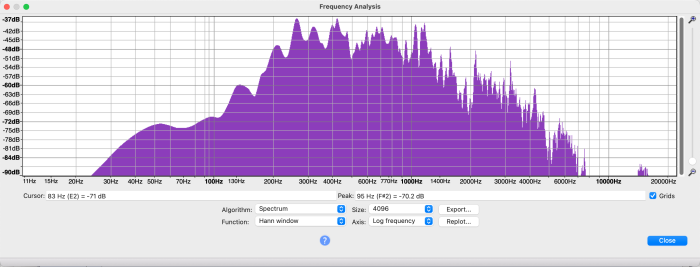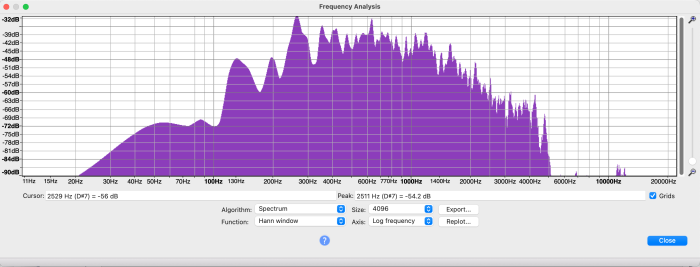Page 3 of 3
Re: Horn shapes
Posted: Thu Oct 27, 2022 2:01 am
by anchorman
I should probably buy that wonderful book. Or maybe get the library at the university to buy it so I can read it.
Re: Horn shapes
Posted: Sat Oct 29, 2022 1:36 pm
by anchorman
So the reading I have done makes it sound like the tractrix shape has less high frequency beaming than an exponential or modified exponential horn. Given that we’re not getting a lot of signal above 4-5khz, is that even a consideration?
I need to draw these curves again to compare, but from what I’m reading from Wilson, the modified exponential curve lies slightly inside the exponential curve, and it seem that the tractrix also lies slightly inside the exponential curve.
I’m trying to wrap my head around what it is with the expert/EMG horns that gives them their special sound.
Re: Horn shapes
Posted: Sat Oct 29, 2022 7:11 pm
by Orchorsol
I believe it may relate to Percy Wilson having set out to model a spherically-developing wavefront, as opposed to a planar one. I've read that it involved some complex 4-dimensional maths along the way to finding the curves.
Re: Horn shapes
Posted: Sat Oct 29, 2022 11:07 pm
by anchorman
Orchorsol wrote: Sat Oct 29, 2022 7:11 pm
I believe it may relate to Percy Wilson having set out to model a spherically-developing wavefront, as opposed to a planar one. I've read that it involved some complex 4-dimensional maths along the way to finding the curves.
I thought that a tractrix horn was supposed to model that type of wavefront shape? I’ve read all sorts of crazy stuff though, including people saying tractrix sounds closer to linear cone shape in terms of tininess. Hopefully I can model the Wilson modified properly and the tractrix and see for myself. Might eventually build them both, but there are so many variables, I’m not sure I could draw meaningful conclusions with just two examples beyond which sound I prefer.
Re: Horn shapes
Posted: Sun Oct 30, 2022 10:28 am
by Ethan
As far as sound goes, I made a twelve-paneled 150 Hz tractrix horn from corrugated cardboard a while ago, and I don’t recall it being remotely tinny—vocals especially had a wonderful warmth and presence. I may still have it stashed away somewhere; if it is and you’re interested, I can make a video of it when I’m home from college in a few weeks.
Something you might find useful if you make both an exponential and a tractrix horn—for a given cut-off frequency, they’re almost identical throughout the narrow diameters, so you might be able to make an EMG Export-style two-piece horn with one neck, but then two removable bells sections, one tractrix and one exponential.
Re: Horn shapes
Posted: Sun Oct 30, 2022 10:42 am
by anchorman
Thanks Ethan, that would be interesting to hear the two horns side by side, same record if you get the chance!
I am very much thinking about making a two piece horn, but need to get the details about tone arm/conduit length and shape squared away before I get too deep, I think. I also need to get moving on building a cabinet for the motor, as there’s not much point in doing a big horn without something to feed it!
Re: Horn shapes
Posted: Mon Oct 31, 2022 9:53 pm
by Ethan
Capital—I’ll add it to my break to-do list!
About the wave-fronts in tractrix versus exponential horns—I think tractrix horns are based on a spherical wave-front of constant radius, whereas Wilson’s modified exponential is based on a constantly expanding spherical wave-front—not completely sure about that, though; someone else might have a better explanation.
Re: Horn shapes
Posted: Mon Nov 07, 2022 3:43 am
by Marco Gilardetti
What also thrills us mathematics / physics addicted about the tractrix curve, is that it can be shaped to have an actual
end at the mouth of the horn, 90° vertical. This is of course impossible with exponential curves.
Having an "elegant" end may have negligible effects over the sound emitted, but is fascinating under many sides.
https://commons.wikimedia.org/wiki/Trac ... zFig2b.png
Re: Horn shapes
Posted: Thu Jan 05, 2023 10:28 am
by Ethan
anchorman wrote: Sun Oct 30, 2022 10:42 am
Thanks Ethan, that would be interesting to hear the two horns side by side, same record if you get the chance!
Anchorman, here's a video comparison of the two:
https://youtu.be/-mkmACzBVl8
As I mention in the description, it's not exactly a good comparison as the cut-offs are different (and the tractrix is made from corrugated cardboard--not the most acoustically inert material in the world); but it might still be useful or interesting. The ~50-60 Hz peak is just ambient noise; the ~90 Hz peak probably is too, although the gramophone might be contributing a little.
The frequency contents (below) match fairly well with the I heard listening in person--more bass from the exponential, but more treble from the tractrix.

- Frequency content of Victor 22272-B ("Cryin' for the Carolines" by Waring's Pennsylvanians) played with the 150 Hz tractrix horn.

- Frequency content of Victor 22272-B played through the 100 Hz exponential horn.